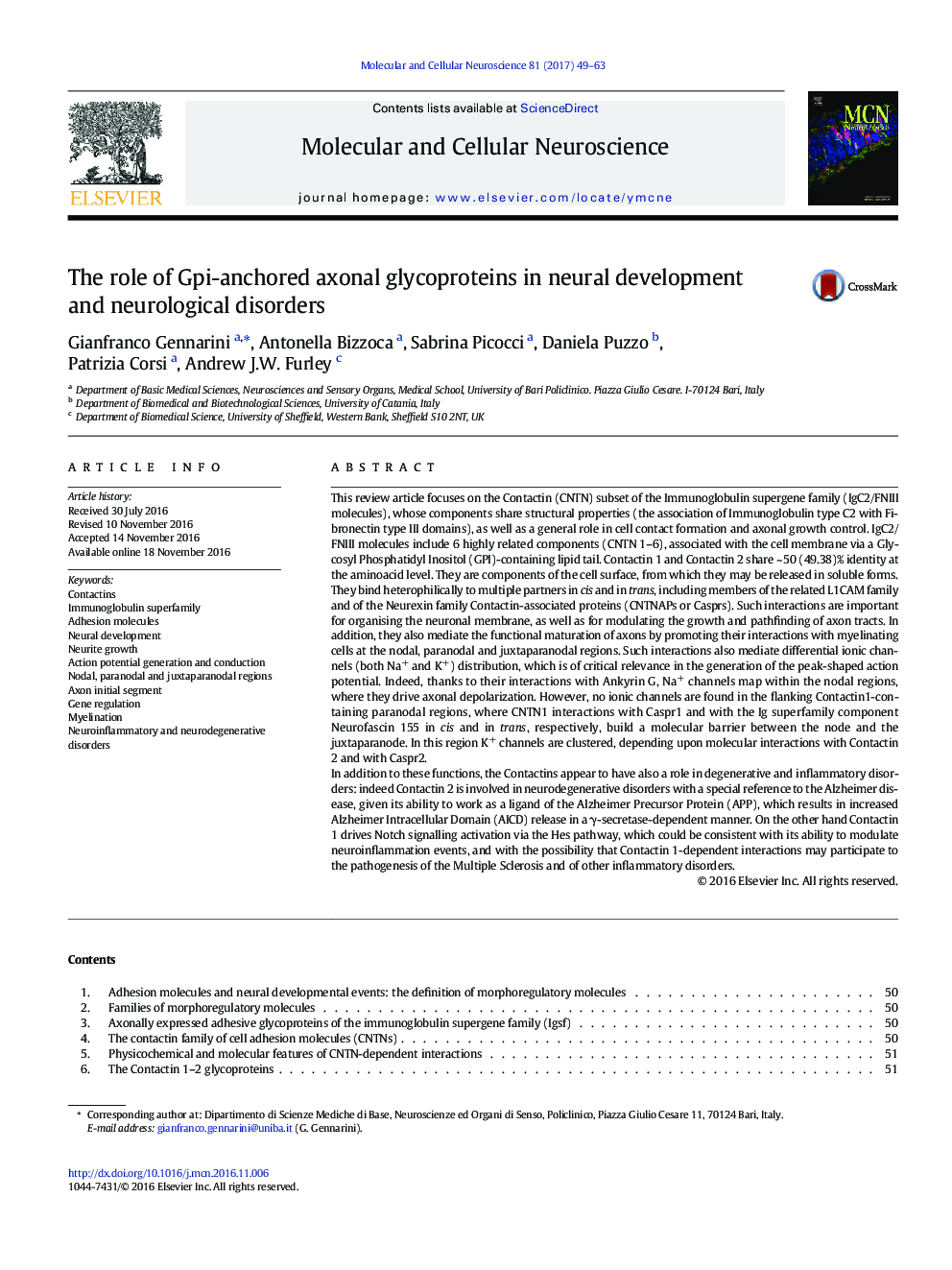| Article ID | Journal | Published Year | Pages | File Type |
|---|---|---|---|---|
| 5534369 | Molecular and Cellular Neuroscience | 2017 | 15 Pages |
â¢This manuscripts deals with the properties of axonal GPI anchored adhesive glycoproteins.â¢This study focuses on components of the Contactin Family (CNTN1 and CNTN2).â¢The significance of the regulated expression of these molecules is explored in development and neurological disorders.
This review article focuses on the Contactin (CNTN) subset of the Immunoglobulin supergene family (IgC2/FNIII molecules), whose components share structural properties (the association of Immunoglobulin type C2 with Fibronectin type III domains), as well as a general role in cell contact formation and axonal growth control. IgC2/FNIII molecules include 6 highly related components (CNTN 1-6), associated with the cell membrane via a Glycosyl Phosphatidyl Inositol (GPI)-containing lipid tail. Contactin 1 and Contactin 2 share ~ 50 (49.38)% identity at the aminoacid level. They are components of the cell surface, from which they may be released in soluble forms. They bind heterophilically to multiple partners in cis and in trans, including members of the related L1CAM family and of the Neurexin family Contactin-associated proteins (CNTNAPs or Casprs). Such interactions are important for organising the neuronal membrane, as well as for modulating the growth and pathfinding of axon tracts. In addition, they also mediate the functional maturation of axons by promoting their interactions with myelinating cells at the nodal, paranodal and juxtaparanodal regions. Such interactions also mediate differential ionic channels (both Na+ and K+) distribution, which is of critical relevance in the generation of the peak-shaped action potential. Indeed, thanks to their interactions with Ankyrin G, Na+ channels map within the nodal regions, where they drive axonal depolarization. However, no ionic channels are found in the flanking Contactin1-containing paranodal regions, where CNTN1 interactions with Caspr1 and with the Ig superfamily component Neurofascin 155 in cis and in trans, respectively, build a molecular barrier between the node and the juxtaparanode. In this region K+ channels are clustered, depending upon molecular interactions with Contactin 2 and with Caspr2.In addition to these functions, the Contactins appear to have also a role in degenerative and inflammatory disorders: indeed Contactin 2 is involved in neurodegenerative disorders with a special reference to the Alzheimer disease, given its ability to work as a ligand of the Alzheimer Precursor Protein (APP), which results in increased Alzheimer Intracellular Domain (AICD) release in a γ-secretase-dependent manner. On the other hand Contactin 1 drives Notch signalling activation via the Hes pathway, which could be consistent with its ability to modulate neuroinflammation events, and with the possibility that Contactin 1-dependent interactions may participate to the pathogenesis of the Multiple Sclerosis and of other inflammatory disorders.
Graphical abstractDownload high-res image (412KB)Download full-size image
